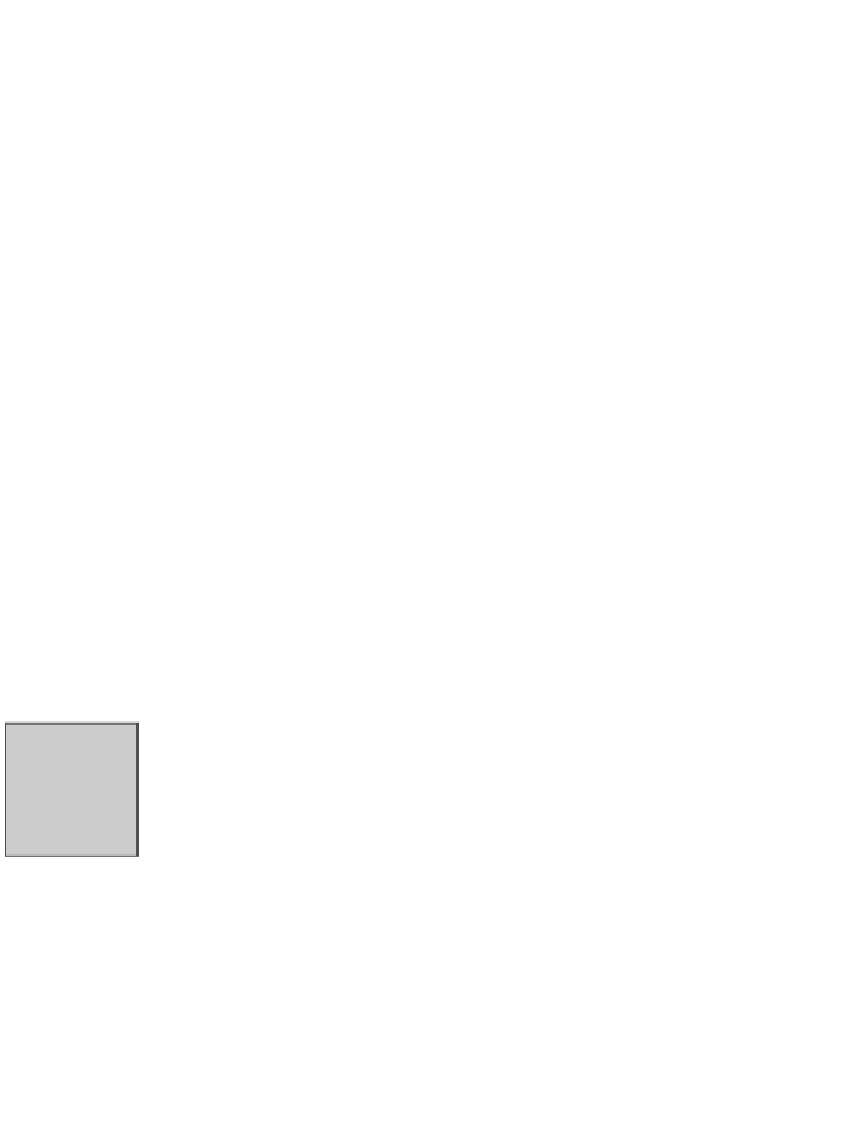Java Reference
In-Depth Information
b= (
byte
) (b + 1);
Prefix operator
(
byte
)
is called a
cast
. It casts or converts the type of the expres-
sion to type
byte
. Similarly, we can use the casts (
short
), (
int
), and (
long
).
Widening
casts —casts that convert from a narrower type to a wider type—
are unnecessary because Java promotes values to a wider type when needed.
Narrowing
casts —casts that convert from a wider type to a narrower type—
must always be written explicitly because Java will never automatically convert
to a narrower type because it may lose information.
Identity casts
, like
(
int
)5
, are also possible, but there is no need for them.
Casts have higher precedence than binary operators
A cast like
(
byte
)
has higher precedence than operators like addition and
multiplication. For example, consider this assignment:
b= (
byte
) b + 1;
// illegal
The assignment is equivalent to:
b= ((
byte
) b) + 1;
// illegal
Thus, the addition is an
int
addition and produces an
int
result, which can-
not be assigned to a
byte
, so the assignment is syntactically illegal. The assign-
ment statement should be written this way:
b= (
byte
) (b + 1);
// legal
6.4
Floating-point types double and float
6.4.1
Type double
The values of type
double
are numbers that can have a fractional part, like
-
.000045
and
35.4
. You can view these as the so-called “real numbers”, but you
cannot represent all real numbers exactly. For example, the number
1/3 =
.333333…
has an infinite number of
3
's in it, so, because a
double
value occu-
pies a finite amount of space (eight bytes), the number
1/3
cannot be repre-
sented exactly in type
double
. Similarly the square root of
2
and
pi
, the ratio of
the circumference of a circle to its diameter, cannot be represented exactly in
type
double
. Type
double
serves only as an approximation of the real numbers.
We give you enough information so that you can write programs that use
type
double
. However, to really use the type well, you need to know more than
we can explain in this topic. A later course, perhaps in numerical analysis, will
explain all the nuances of type
double
.
Lesson pages
6-3 and 6-4
discuss type
double.
Literals of type double
There are three forms of
double
literal:

Search WWH ::

Custom Search